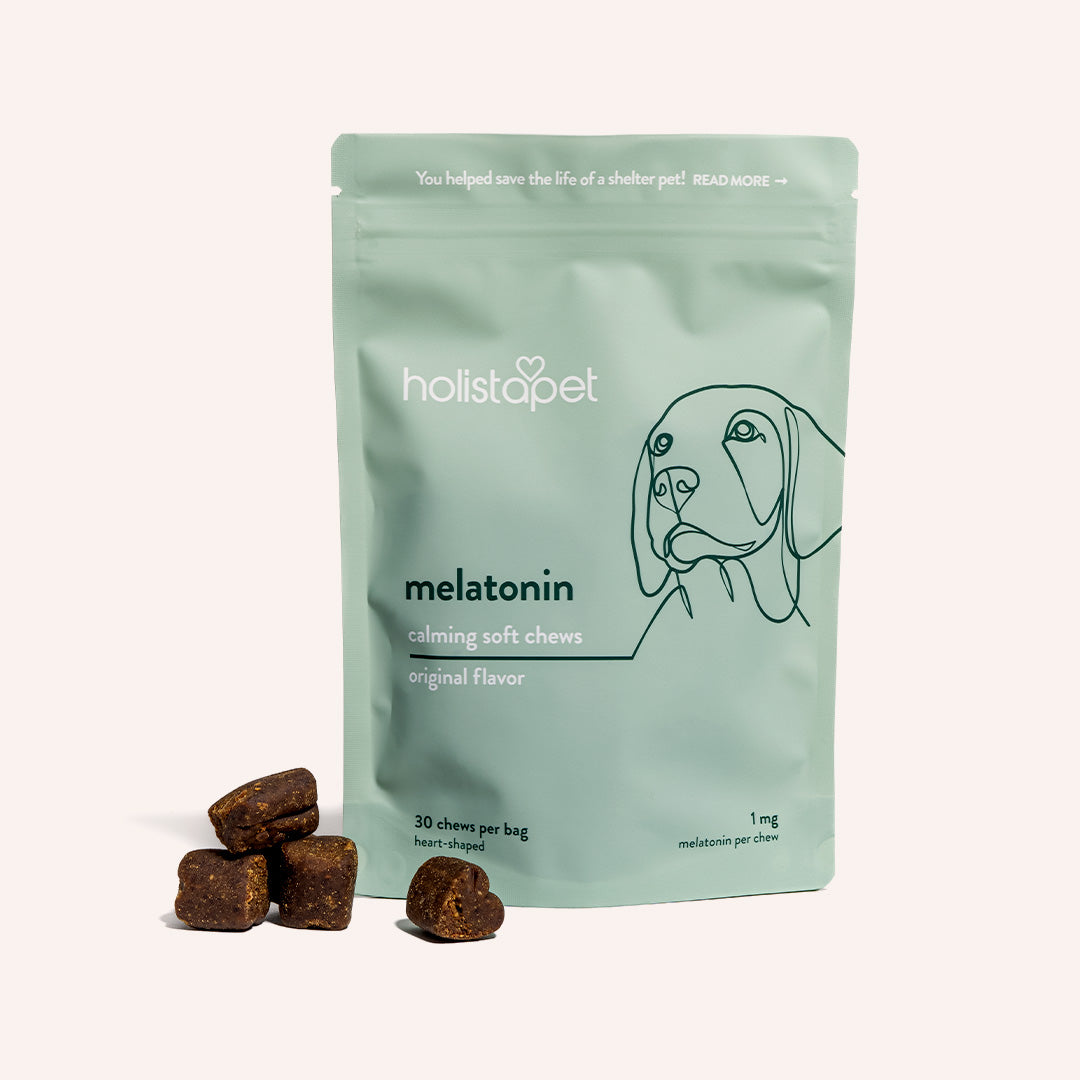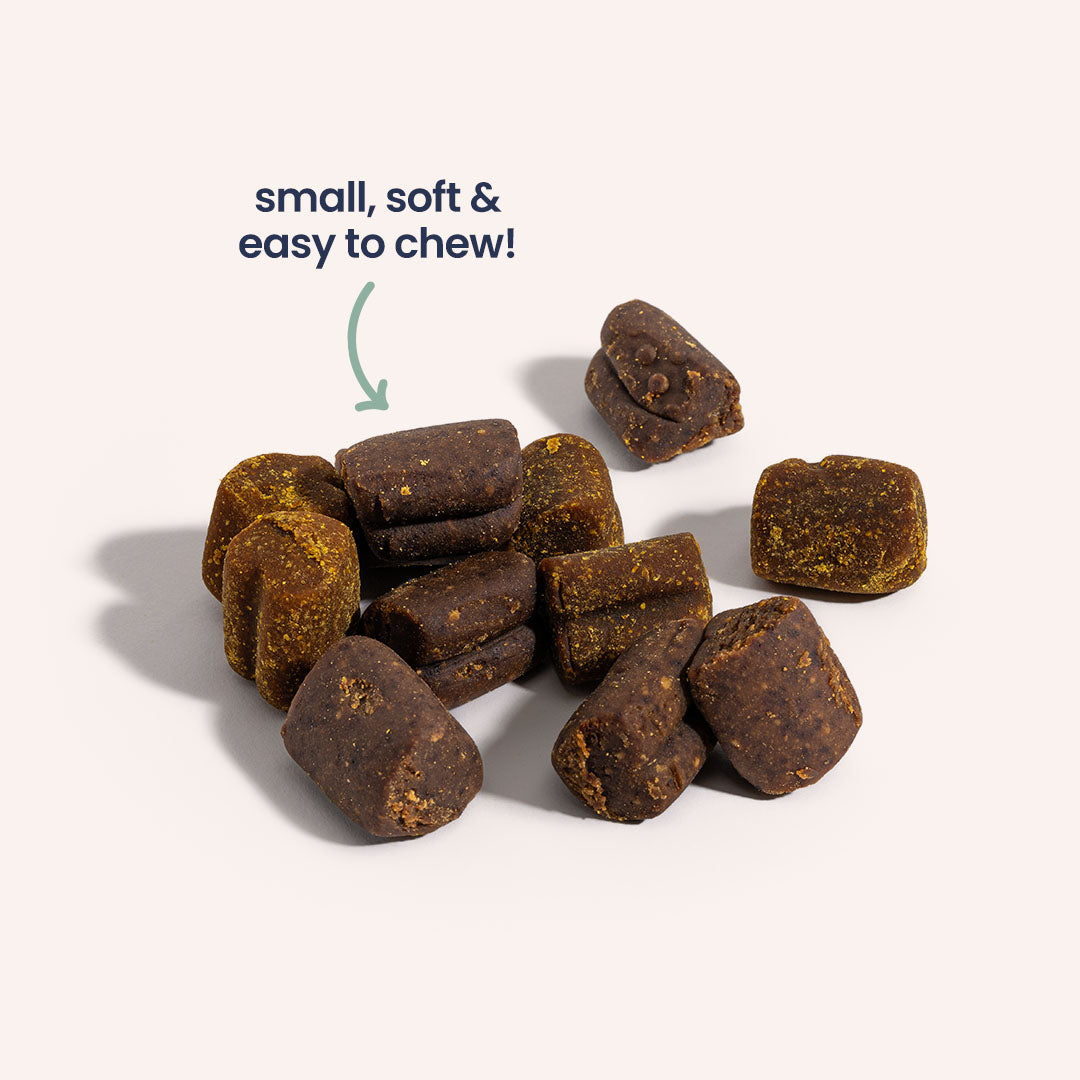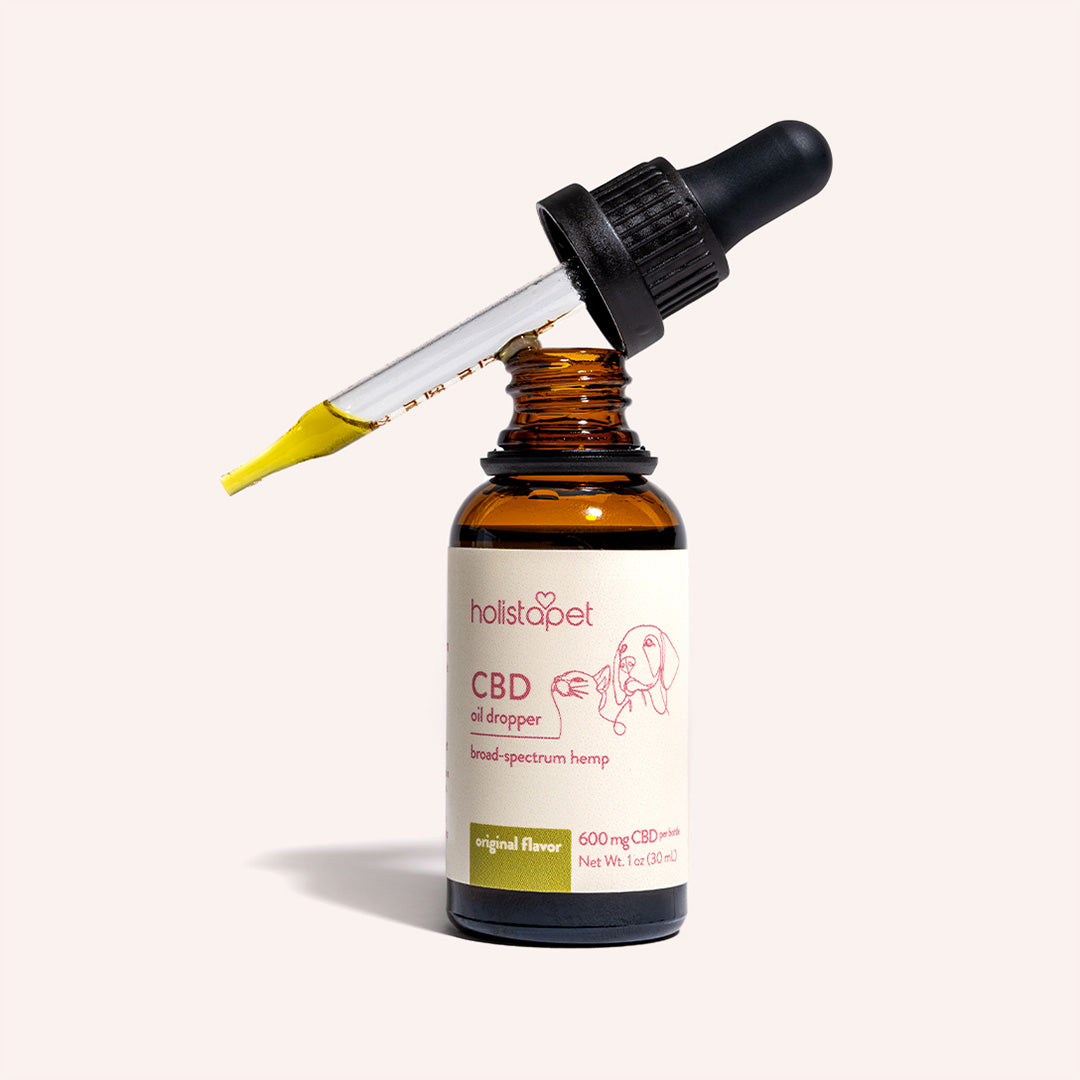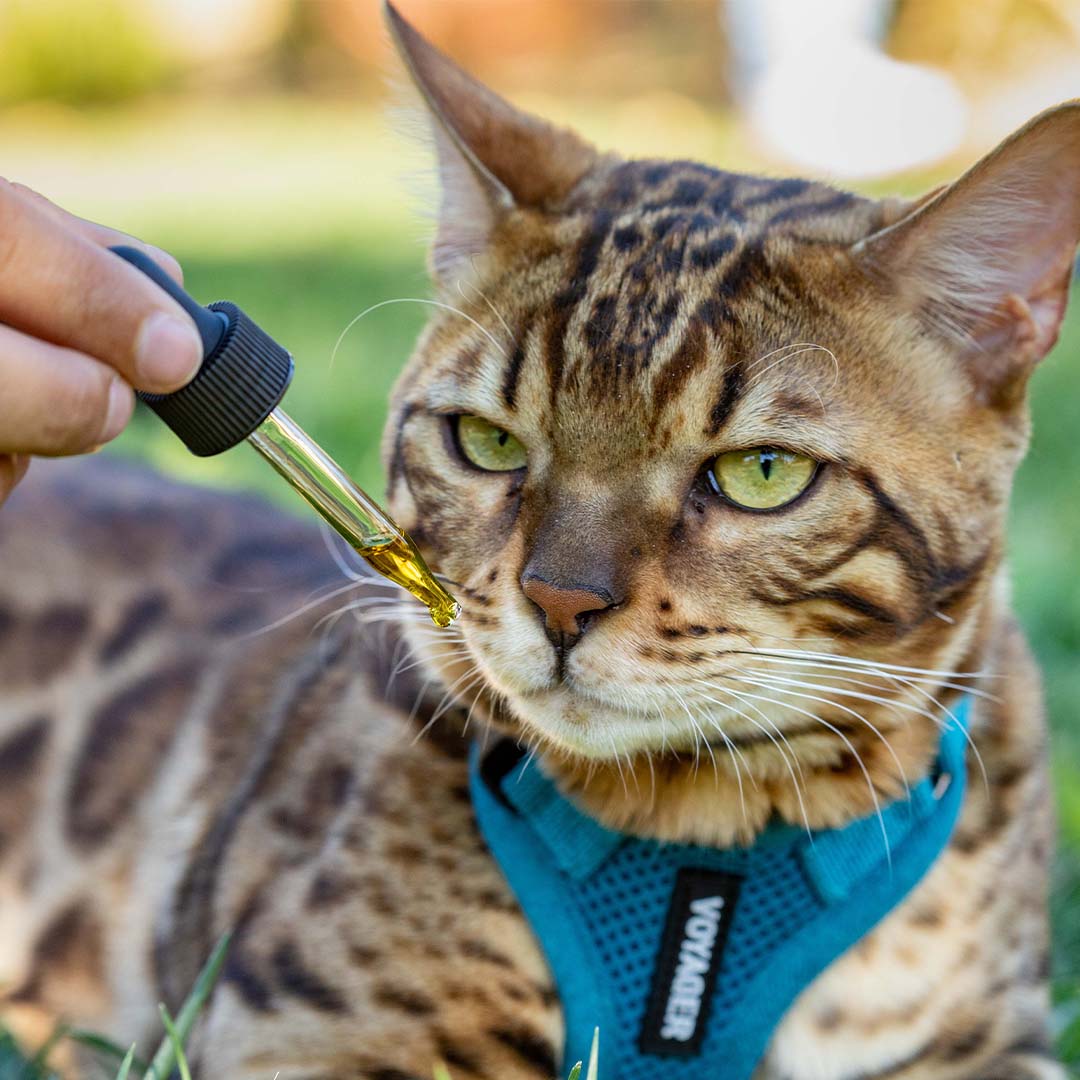Nipping is a common behavior for dogs. Play biting might be fun in their eyes, but it can be annoying and even dangerous for those on the receiving end. We know how to stop a dog from nipping when excited, and we're here to tell you! There are many reasons why your dog may be nipping when they're excited or otherwise, and once you recognize the signs, you'll be able to help stop those behaviors. We've got some simple training techniques you can use and a few methods you should steer away from.
Why Is My Dog Nipping at Me When Excited?
Nipping (also known as "mouthing") is a relatively common issue for dogs. Most dogs exhibit some nipping or mouthing behavior in their lives, although it's more typical of puppies than adult dogs. Here are a few reasons why your dog might nip.
They Want To Play
It can be hard for us humans to understand a dog's compulsive need to bite but remember that they use their mouths for a wider range of purposes than us. Since they don't have hands, our pets need to use their mouths to interact with you. If you have an overly excited dog, they might nip at you. Unfortunately, that thing might be you, other people, or other dogs.
Puppy nipping is a very common behavior. It is a focal point of obedience training classes, and most dogs grow out of it by adulthood. Dogs are considered adults when they reach the age of one, but some breeds can take up to two years to reach full maturity. It's uncommon for an adult dog to bite.
They Think You Like It
Dogs bite when they play (remember, they can't use their hands to pick up their toys). Therefore, they naturally associate nipping with a good time. Your dog probably thinks you'd feel the same way. When your dog's teeth touch your tender skin, it's natural to yelp or shriek a little in pain.
Unfortunately, your dog may misinterpret your cries as sounds of excitement and think that you're having a good time. We know it's hard to stay still, but the less noise and movement you make when your dog nips, the less you'll increase their excitement and aggression.

They Feel Nervous or Afraid
Some dogs exhibit compulsive chewing behavior when they get nervous, similar to how some people bite their nails when they stress out. Common sources of distress for dogs include:
- New pets or people in the home.
- Loud noises like fireworks.
- Changes to their routine (like a new kind of food).
As you can see, most stressors in a dog's life have to do with sudden change and breaking from their routine. Consistency, especially during their formative years as a puppy, is key to your dog developing a calm and steady demeanor. When dogs feel seriously frightened, they may bite out of aggression to protect themselves. If you notice your dog seems tense, do not make loud noises or sudden rapid movements, as they might incorrectly see you as a threat. Remember to stay calm with your dog, and they'll be more likely to do the same.
Is It Friendly or Aggressive?
It's frustrating when your dog nips at you, but their heart is usually in the right place. You don't want to overreact to this playful behavior, but at the same time, you want to be safe around aggressive dogs. Here's how to tell if a dog bite is friendly or aggressive behavior. Generally, playful dogs have a relaxed body and facial expression.
You might see their muzzle wrinkle up a little bit, but you should not see tension in their muscles. Often, playful biting is accompanied by other signs of excitement and even hyperactivity. Your dog will probably race around the room and jump on you as well. In contrast, an aggravated dog typically has a stiff body with muscles tensed up. They may wrinkle their muzzle, pull back their lips to display their teeth and even growl. Consider it a warning sign if you see this behavior and step away from the dog.
Is a Dog Bite Dangerous?
Playful nips are nothing to worry about, but aggressive biting can be quite dangerous. Friendly mouthing might be painful, but it is usually gentle enough to not break human skin. Angry bites, on the other hand, often draw blood. A dog's mouth contains a lot of bacteria, and aggressive biting can lead to infections. This is where the real danger lies. If a dog bites you and breaks the skin, you should follow these first aid instructions to sanitize the wound.

Why Does My Dog Nip At Visitors?
Most dog nipping comes from three main causes — excitement, nervousness, and a desire to play. If your dog frequently nips at visitors, they may be experiencing all three of these feelings. New people in the home are one of the most common causes of anxious behavior in dogs.
Your pet might be afraid of the visitors at first, and they may need some time to investigate the newcomer and develop trust in them. If a stranger tries to approach your dog and pet them before the animal feels safe, they might get a cautionary nip. On the other hand, your dog might be excited to meet new people. Every visitor has the potential to be a new playmate! Events like house parties with plenty of visitors can easily lead to an overstimulated dog running around and nipping people to get their attention and engage in playtime.
Training Methods
If your dog won't stop nipping people, the best thing to do is take them to a certified professional dog trainer to learn bite inhibition. Obedience classes are a good idea for any puppy, as they teach them good behavior and give them a space to socialize with other dogs as well.
Professional training is key, but it's equally important for you, the owner, to get involved. Your dog needs to learn to take commands from you, not just the trainer. Most dog trainers let the owners get involved in obedience lessons, and there are several techniques you can use at home to reinforce positive behavior. Let's take a look at some common training practices right now.
Positive Reinforcement
Positive reinforcement lies at the heart of all obedience training. By rewarding your dog for obeying commands, you reinforce that same behavior in the future. You can give reinforcement in the form of treats, cuddles, praise, or anything else you know your dog enjoys. You should incorporate positive reinforcement into any training technique.
For example, let's consider vocal commands. If your dog jumps on people and nips them when they get excited, they need to learn the "No" command. Say "No" in a firm tone (but don't yell), and if your dog stops the problematic behavior, reward them with a treat or praise. If your dog gets too excited, having them learn commands can help stop the nipping.

Attention
Positive reinforcement works because your dog wants lots of positive attention from you. You can take the same principle and flip the tables, withholding attention when your dog displays a problem behavior like nipping.
Clickers
A clicker is a small device that makes a clicking sound when you tap it — yep, it's that simple. Clickers are available at most pet supply stores, and you use them in tandem with treats. This technique is called "mark and reward." When your dog does the right thing, such as stopping nipping and sitting obediently, click the device. It's important that you time the click for the exact moment your dog performs the desired behavior. Immediately after you click, give the dog a treat.
The clicker serves to "mark" the exact moment that your dog did the right thing. When you follow each click with a treat, the dog learns to associate the sound with a reward. Consistency is especially important with clicker training. If you mistime the click, you could confuse the dog, and then they won't know what specific behavior you're rewarding them for.
Add Extra Walks
Nipping is often a sign of an overstimulated dog. If your pup doesn't get enough physical activity throughout the day, all that pent-up energy can escape in negative ways like play biting. If your dog has excess energy, try extending their daily walks or adding more. Walks are great exercise, and they help stimulate your dog's mind.
They'll encounter lots of engaging sights and sounds when they venture outside, and they may even get a chance to meet other dogs. If your dog expends most of their mental and physical energy on walks, they are less likely to stop agitated behaviors, like nipping when they get excited or happy.
Take Them to a Dog Park
The dog park is the perfect place for your excited pup to burn off that extra energy. Playing with other dogs builds your pet's social skills and teaches them not to fear strangers. The more time they spend with other people and pets at the park, the more comfortable they'll be when visitors come to your home.

Chew Toys
If your dog has a nipping problem, try giving them a toy to gnaw on. This will give them an outlet for their energy and mouthing urges that doesn't hurt anybody. We recommend keeping a couple of chew toys out at all times, so your dog can satisfy their biting needs at all hours. These days, you can even find chew toys with CBD (cannabidiol) for an added soothing effect. You can also put CBD oil or spray it on a regular dog toy. This natural, hemp-derived compound has a calming effect and helps to reduce nervous, overexcited behavior.
Scattering Food or Snacks on the Ground
You can also try distracting your dog with a pleasurable activity. Tossing treats is a perfect example. The next time your dog goes into a nipping frenzy, take a small handful of bite-sized dog treats and toss them on the floor. Your dog will go diving for the goodies, and by the time they've gone around and collected all the treats, they should have worked out a lot of their energy.
Gathering treats also puts your dog in a better mood because — well, treats are awesome, of course! The scatter technique works especially well with treats containing CBD for extra calming benefits. Speaking of dog treats...
Treats
Whether you choose to use the scattering technique or not, dog treats are an essential training tool. Remember what we said about positive reinforcement. When your dog does the right thing, you should reward them, and a delicious treat is a perfect gift. We recommend HolistaPet's Calming CBD treats for dogs. They contain CBD, L-theanine, and chamomile for natural soothing effects. If you have an older dog who struggles to eat crunchy treats, don't worry. HolistaPet's CBD Soft Chews are a tender treat for even the most sensitive mouths.
Deterrent Sprays
Pet stores sell a variety of sprays designed to deter dogs from biting. While you can purchase canine pepper spray, we do not recommend it, as pepper spray is very harsh and can damage the skin and eyes. If you need a deterrent spray, try one made with citronella oil.
Citronella plants are closely related to lemongrass, and the smell of their natural oil repels many animals. Citronella is a popular natural pesticide and mosquito repellent for this very reason. Spray a little citronella into the air (don't spray it directly at your pet), and the dog should step away to avoid the smell.
Muzzle
Some people think that a muzzle is designed to lock a dog's mouth shut completely, but this isn't the case if you get the right kind of muzzle. A good muzzle has plenty of room for your dog to open its mouth. However, the muzzle does prevent them from wrapping their jaws around something they shouldn't, like you or your houseguests.
Things To Avoid
We've talked about the dos, so now it's time to address the don'ts. The previous training methods relied on positive reinforcement to teach dogs good behavior. Other techniques rely on fear, terrifying dogs into behaving the way their masters want. Aggressive methods are not only ineffective but frequently make matters worse as well. We're going to discuss some practices that we strongly discourage, but sadly, many people do them anyways.
Screaming and Yelling
If something hurts you, you want to lash out — that's our animal instincts at play. But we have to resist the urge to yell or scream when our dog nips at us. First of all, your pet might misinterpret your screaming and the sound of excitement, as we previously mentioned. They might also see your yelling as a dangerous sign of aggression, prompting them to protect themselves by lashing out more.
Instead of screaming at your dog, use a firm but steady voice to issue commands. Saying "No," "Stop," or "Sit" in a stern tone of voice should be enough to send the message. If you need guidance on what vocal tone to use for obedience training, you can listen to examples online or talk to a professional trainer. If you want to stop your dog from nipping when they get too excited, you'll need to stay as calm as possible!

Hurting Them
If your dog bites you, the last thing you want to do is strike them back. Hitting back will surely scare your dog even more than yelling at them. A frightened dog will only grow more agitated with time. Violence may make them bite more because they feel a greater need to protect themself.
The Alpha Roll
Old school dog trainers used a technique called the "alpha roll" to curb unwanted behaviors. Performing an alpha roll involves tackling the dog, forcibly rolling it onto its back, and pinning it to the ground. It is an aggressive, violent technique that modern trainers strongly discourage. Alpha rolls only work through fear, if they work at all. They are equally as likely to make your dog more aggressive. Alpha rolls can make your dog feel unsafe in their own home, putting them in a constant state of wary tension.
Spraying the Dog
Some people believe that a spray bottle filled with water is an effective training method. When the dog nips, you spritz it in the face. While this technique is not as harmful as violent attacks or alpha rolls, it still seeks to reinforce certain behaviors through fears. Fear-induced training relies on dealing with trauma to the animal. If you routinely grab a spray bottle and unleash it on your dog, they might start to show fear anytime you reach for anything. Positive reinforcement is far more effective, and it builds stronger bonds between pets and their people.
Locking Them up in a Kennel
When you're at your wit's end with a dog who won't stop nipping people, you might be tempted to lock them in a kennel, crate, or dog house. However, this punitive behavior may do more harm than good. Spending long periods confined in a tight, claustrophobic space is bound to agitate anyone.
If something hectic happens in your house, like a birthday party or a weekend visit from the in-laws, it can help separate your dog from these stressors. Instead of using a kennel, consider keeping them in a separate room or wing of the house. Make sure to provide them with food, water, toys, and a comfy spot to sleep. You can even leave them in a room with the door open and a baby gate across the entrance so that they can see you but can't physically interact unless you initiate it.
Final Thoughts — How To Stop a Dog From Nipping When Excited
With patience and a positive attitude, you can help your dog learn the right behavior and stop your dog from nipping when they get excited or worked up. The key is positive reinforcement. Don't give in to fear tactics like the alpha roll as a way to curb unwanted behavior. Training your dog to fear you will damage the relationship for both of you.
If your dog exhibits other signs of overstimulation or hyperactivity, try soothing them with CBD. At HolistaPet, we offer CBD treats, tinctures, topicals, and more to soothe your agitated pup.








![Probiotics For Dogs [Soft Chews]](http://www.holistapet.com/cdn/shop/files/Probiotic-Infographic-1_472d7a29-e30c-435a-9638-1365d8c3a9f9.jpg?v=1725384841&width=104)















![How To Stop a Dog From Nipping When Excited [Causes + Solutions]](http://www.holistapet.com/cdn/shop/articles/240.jpg?v=1715221919&width=1500)

![What Can I Give My Dog for Tooth Pain Relief? [Addressing Dental Issues]](http://www.holistapet.com/cdn/shop/articles/294.jpg?v=1715279685&width=500)












Leave a comment
This site is protected by hCaptcha and the hCaptcha Privacy Policy and Terms of Service apply.